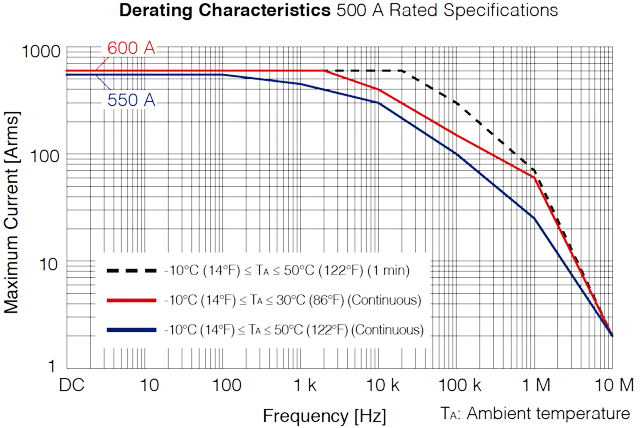Derating in the specifications of current sensors/probes
QWhat is "frequency derating" in current sensors and current probes?
A
The frequency characteristics and rated current are specified for the each product.
For example, in the case of the AC/DC Current Sensor CT6904, the specifications are DC to 4 MHz (+3 dB/-3 dB) and 500 Arms, but this does not mean that the current sensor can measure a current of both 500 Arms and 4 MHz. The answer is somewhere in between.
Please look at the figure below. The Arms and frequency measured by these type sensors follow a line like this where the measurable Arms falls as the frequency rises.
This characteristic is called frequency derating.
Three types of frequency derating are specified in consideration of the ambient temperature and measurement time. These show the measurable current value at each frequency. For example, when the ambient temperature is 30 °C (the red line), continuous measurement up to 600 Arms is possible for DC to 2 kHz, even though the accuracy is not guaranteed.
Furthermore, although the maximum input current is within the derating range shown in the figure below, the sensor would be able to withstand, as per its design, an instantaneous current (lasting 20 ms or less) of ±1000 Apeak.
For details, please make sure to check the product specifications of each model.
-
 Figure: Derating characteristics of CT6904 (500 A rated current)
Figure: Derating characteristics of CT6904 (500 A rated current)
